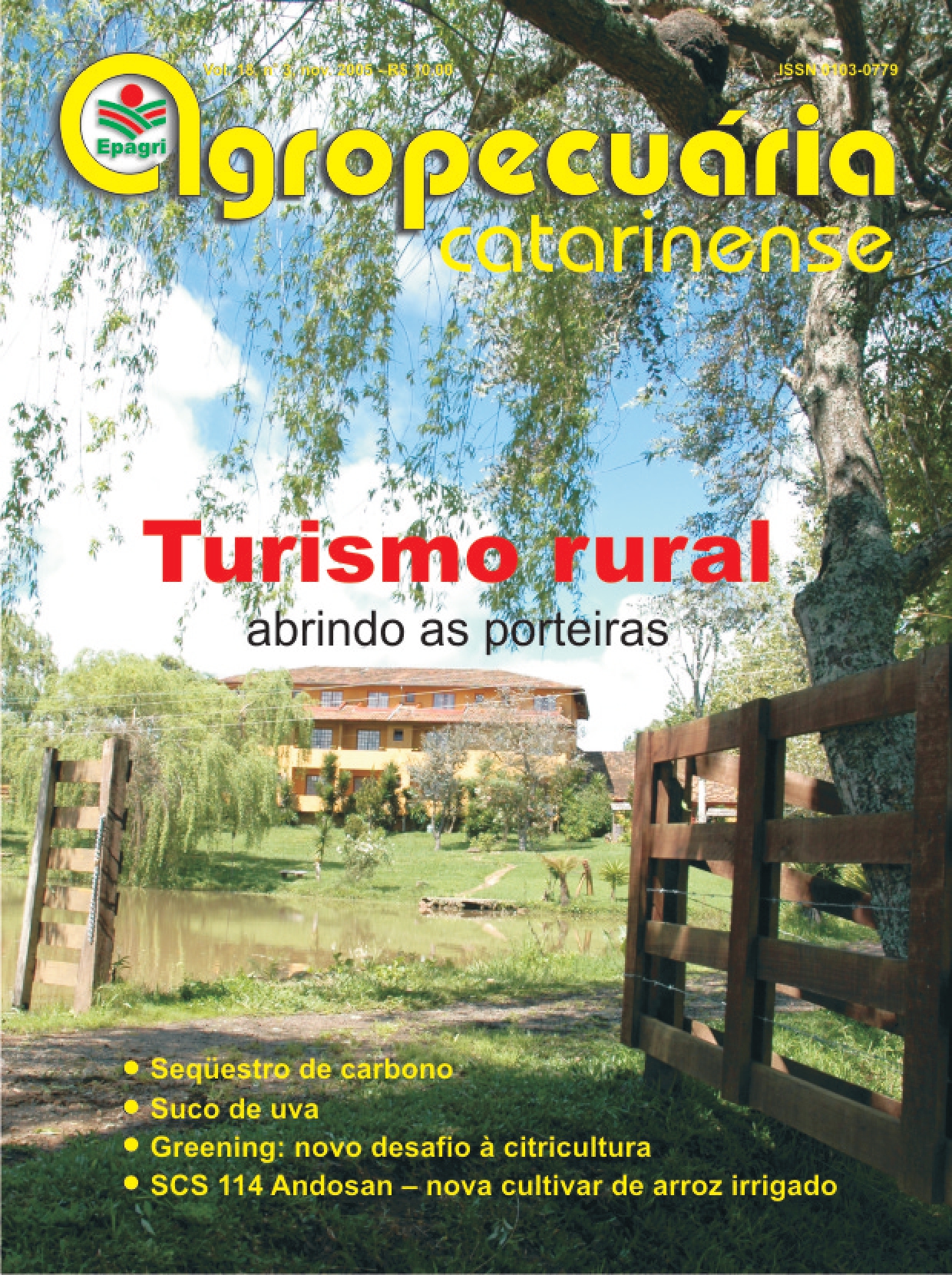SCS 114 Andosan – first brazilian lowland rice mutant cultivar
Keywords:
Oryza sativa, plant breending, induced mutation, gamma raysAbstract
High grain yield and good quality are the main objectives of rice breeding program of Epagri. Two
breeding methods are used, namely crosses between two or more cultivars, and induced mutations. The latter allows the generation of genetic variability from a single cultivar. Rice cultivar SCS 114 Andosan was obtained through gamma rays irradiation of seeds from the parent cultivar IR 841. IR 841 was one of the first dwarf type and highly productive cultivars used in Santa Catarina, due to its high grain yielding potencial; however, its grain quality is poor. As the rice grown area expanded, IR 841 became susceptible to blast. The selected mutant SCS 114
Andosan is as productive as the original cultivar and has also shown higher resistance to blast and superior grain quality.
Metrics
Downloads
Published
How to Cite
Issue
Section
License
Copyright (c) 2005 Agropecuaria catarinense

This work is licensed under a Creative Commons Attribution 4.0 International License.



